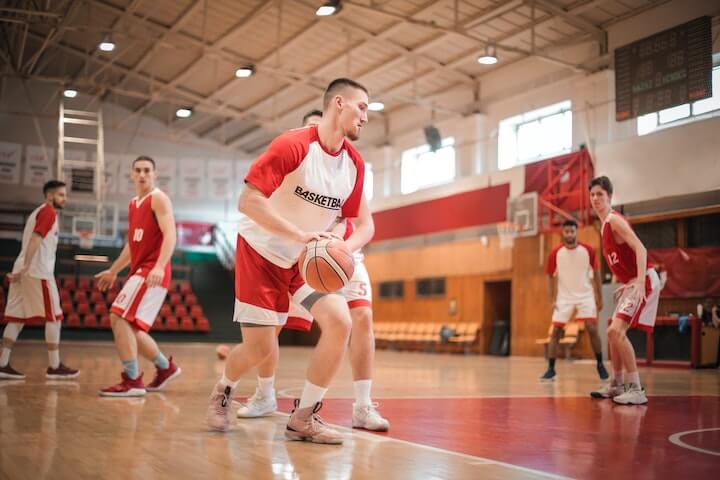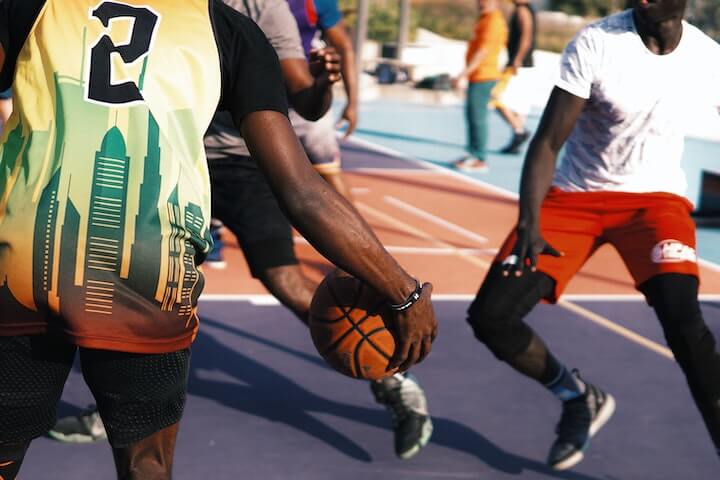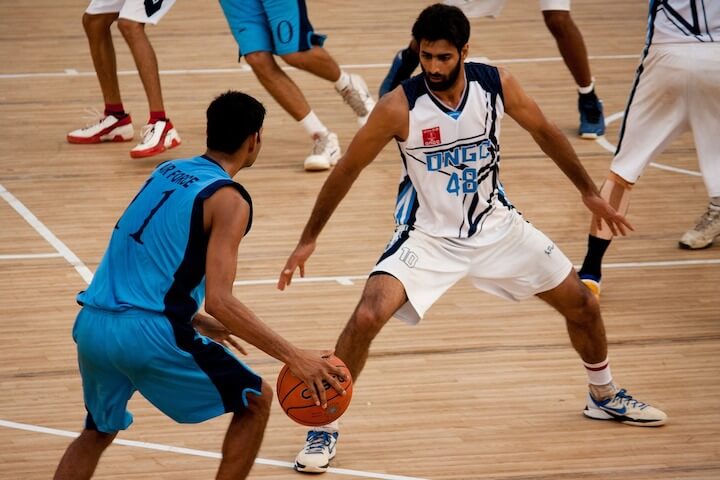Basketball coaches are often very attentive to their stats, as these figures provide valuable insights into their team’s performance.
Some may prioritize shooting percentages, while others might emphasize rebounding statistics.
Regardless of which metric captures a coach’s initial interest, one statistic that certainly cannot be overlooked is the number of turnovers committed by their team.
Turnovers stand out as a clear reflection of a team’s performance, especially since they are less susceptible to distortion based on the opponent.
In this article, we’ll explore the nature of turnovers in basketball, reasons teams strive to minimize them, and techniques coaches can teach players to reduce their occurrence.
Defining a Turnover in Basketball
In basketball, a turnover happens when the offensive team loses possession of the ball before they can make a shot.
How Turnovers Happen
Turnovers can occur in two main ways:
1. Violations
A violation happens when an offensive player breaks a rule, prompting the referee to halt play and award the ball to the opposing team.
Common violations include: traveling, double dribble, carrying, out of bounds, 3-second violation, 5-second violation, 10-second violation, backcourt violation, shot clock violation, illegal screen, and charging.
2. Player Mistakes
The second avenue of turnovers is through player errors, which occur when mistakes lead to the opposing team regaining possession.
These errors often arise during dribbling or passing situations.
Players may mishandle the ball while dribbling, make inaccurate passes that allow the defense to seize the ball, or fumble in any manner that results in a turnover.

Consequences of a Turnover
A turnover results in losing possession of the ball, allowing the opposing team to advance to the offensive end.
The method by which the defending team assumes possession varies based on the nature of the turnover.
1. Dead Ball Turnover
A dead ball turnover takes place following a violation.
In such cases, the defending team must inbound the ball from the sideline or baseline nearest the infraction to commence their possession.
2. Live Ball Turnover
Live ball turnovers happen as a result of a dribbling or passing mistake.
In these scenarios, the defense gains immediate possession of the ball and can swiftly transition to offense to attempt a score.

Instructing Players on Preventing Turnovers
A consensus among basketball coaches is the aversion to seeing their teams lose possession of the ball.
Here are several strategies to assist your team in steering clear of costly turnovers:
1. Emphasize Dribbling
Regardless of the age group you coach, dedicating ample time to dribbling drills is vital.
Highlighting weak hand development ensures that defenders cannot solely anticipate a player’s dominant hand.
Enhancing a player’s ability to drive in either direction greatly reduces the frequency of dribbling turnovers.
Additionally, it’s essential to practice dribbling in the presence of a defender rather than relying solely on stationary drills.
While mastering fundamental dribbling skills is important in isolation, applying these techniques against live defense uncovers any deficiencies in a player’s game.
1-on-1 practice sessions provide an excellent opportunity to refine ball-handling skills.
2. Live Passing Drills
Similar to dribbling, developing passing skills against a live defense is crucial for your players.
You can initiate training with basic partner passing to cover different passing techniques.
However, once they grasp the fundamentals, it’s imperative to incorporate drills that involve real defenders.
This approach aids players in discerning effective passing strategies and understanding the significance of executing a pass fake, which is challenging to convey without defensive pressure.
3. Overloading Drills
A highly effective practice strategy is to have an offensive group attempt to score against a defense with an increased number of players.
This tactic compels the offense to focus on moving to find open space, making precise passes to teammates, and utilizing dribbling to navigate challenging situations or enhance passing angles.
The extra defender ensures that there is constant pressure on the ball, and the offensive team won’t have the luxury of making uncontested passes.
Designing practice scenarios that exceed the difficulties faced in actual games can instill greater confidence in players, enabling them to remain composed when confronted with tough defensive pressure.

Final Thoughts
For any offensive team, there’s hardly a more frustrating occurrence than a turnover.
Whether stemming from a violation or a player’s blunder, losing the opportunity to score due to a turnover can lead to significant setbacks.
While completely eliminating turnovers may not be feasible, there are definite strategies to minimize their frequency.
By refining your players’ skills through practical dribbling and passing exercises, you can enhance their ability to manage the ball effectively and keep turnover rates as low as possible.
Discover more from Marki Mugan
Subscribe to get the latest posts sent to your email.









